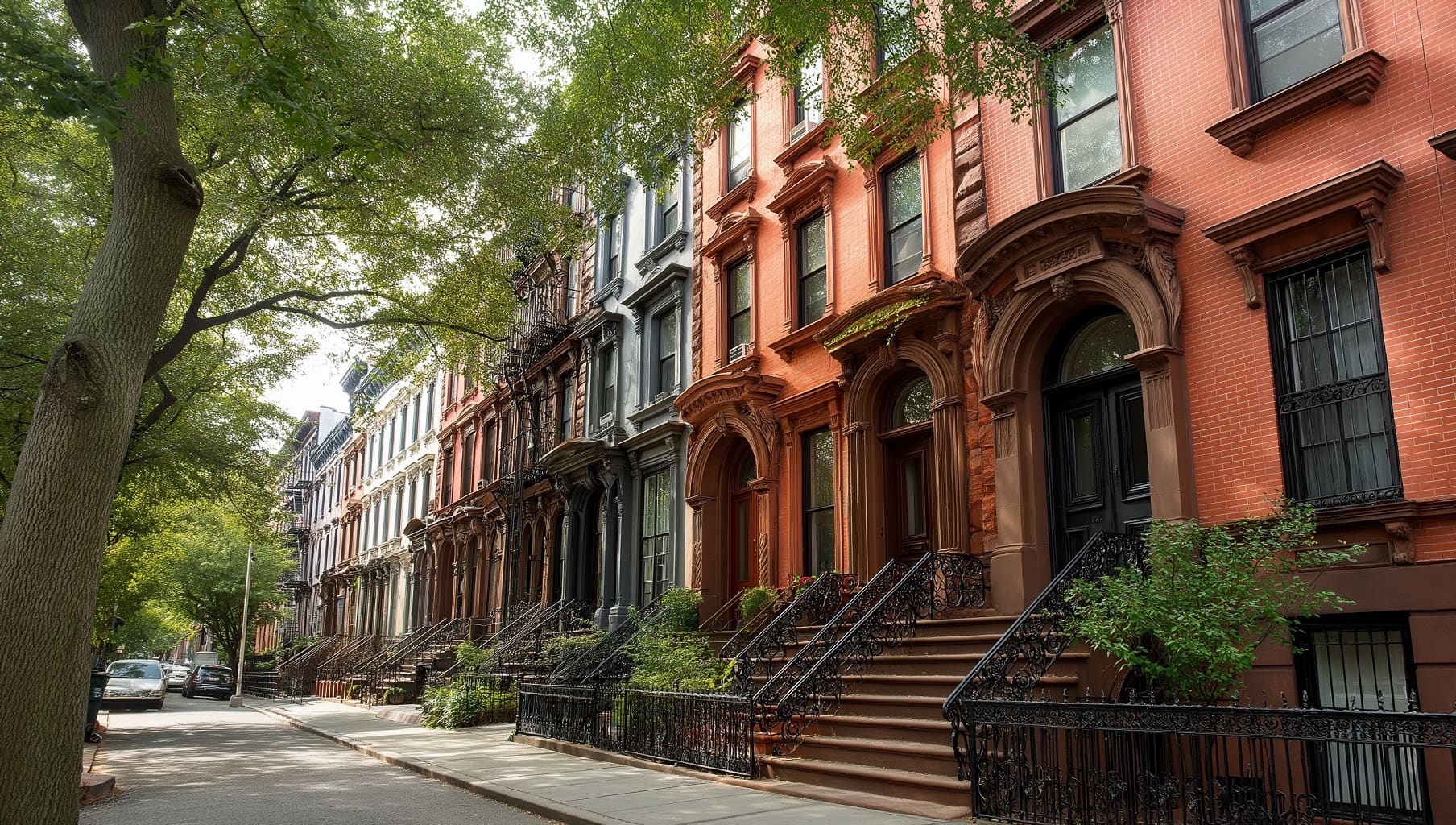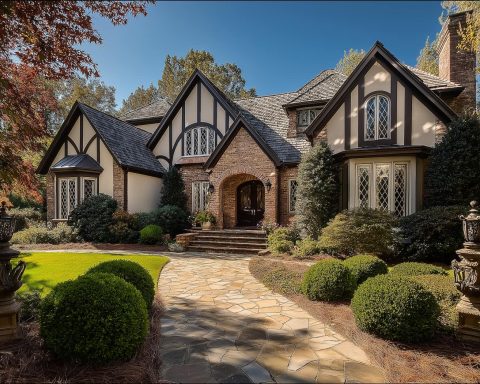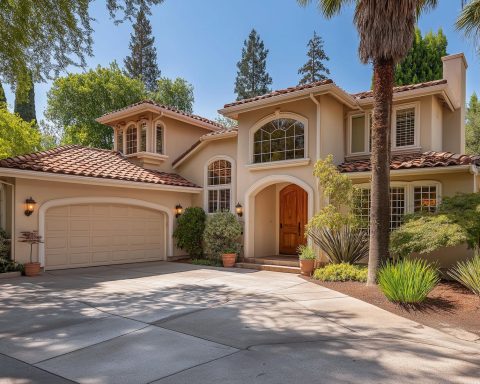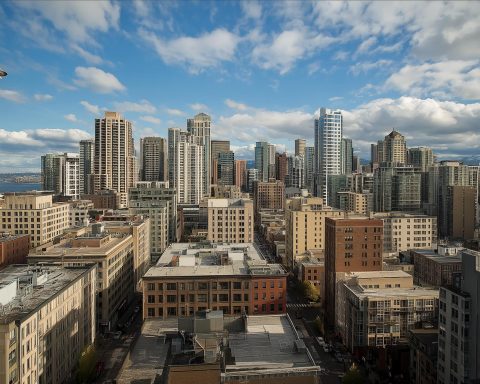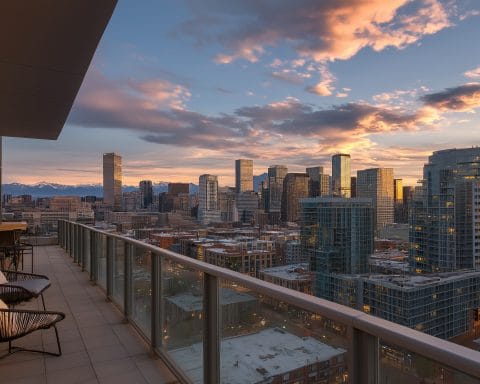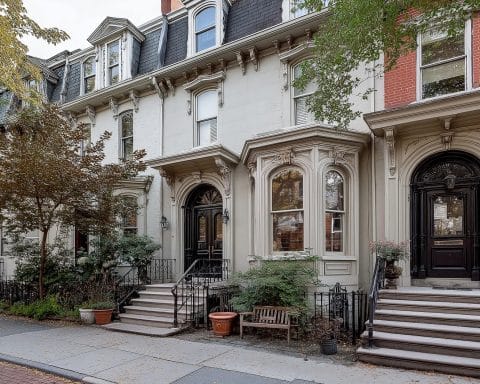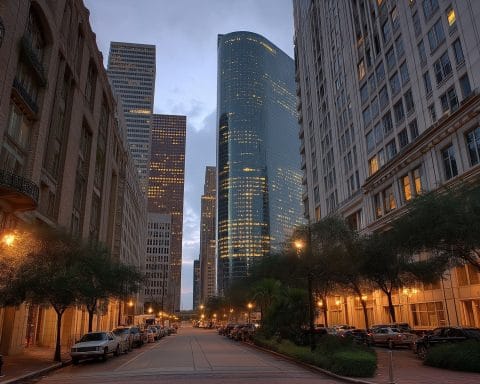New York’s real estate market in 2025 is navigating a dynamic landscape shaped by the post-pandemic recovery, high interest rates, and shifting preferences. Overall, home prices have risen modestly – the median sale price in New York City reached about $881,000 (June 2025), up roughly 3–4% from a year prior rocket.com. Inventory remains tight as many homeowners are holding off selling due to elevated mortgage rates, contributing to a competitive market for well-located properties theluxuryplaybook.com theluxuryplaybook.com. Meanwhile, rental demand is extremely robust, with citywide vacancies near historic lows (~2% or less) and rents at record highs brevitas.com theluxuryplaybook.com. The commercial sector presents a mixed picture: high-end office leasing is rebounding strongly, even as older office buildings struggle with vacancies credaily.com brevitas.com. At the same time, major new developments and infrastructure projects – from Hudson Yards to new transit lines – are forging ahead, signaling confidence in the region’s long-term growth brevitas.com brevitas.com. In the sections below, we delve into key aspects of New York’s real estate market for 2025 and the outlook for the next few years, including residential and commercial trends, prices and forecasts, rentals and yields, investment opportunities and risks, new projects, economic drivers, policy changes, and regional differences across the state.
Residential Real Estate Trends: Sales and Prices
Home Sales and Price Trends: New York’s residential market in 2025 has been characterized by low inventory and moderate price growth. Citywide, median home prices have inched up by a few percent year-over-year rocket.com. For example, as of mid-2025 the median sale price in NYC was around $881,000, up 3.4% from a year earlier rocket.com. Outer boroughs have seen slightly stronger appreciation than Manhattan: median prices rose about 4–5% YoY in Brooklyn and Queens, compared to roughly +1% in Manhattan rocket.com. This suggests demand has remained solid in more affordable boroughs, while Manhattan’s ultra-high pricing has kept gains modest. Indeed, Manhattan’s median price (~$1.3M) is still below its pre-pandemic peak in many segments, after several years of softening at the high end brevitas.com. Looking ahead, forecasters anticipate continued gradual price increases. By early 2026, NYC home values are projected to rise into the $800K+ range (roughly 4–6% above current levels), reflecting cautious optimism about an upturn as the market adapts to the new interest rate environment theluxuryplaybook.com. In other words, the long-term trajectory remains upward, though price growth is slower than the double-digit surges seen in 2021–2022 brevitas.com.
Market Activity and Buyer Trends: Buyer activity picked up in late 2024 into 2025 as confidence improved. Contracts signed have been increasing, especially when fresh inventory appears client.rg2.imprev.net. Homes in NYC are now selling close to asking price on average – in mid-2025 over 50% of listings sold at or near their asking price (only ~12% sold above ask) rocket.com rocket.com – a sign of a market balancing after the bidding wars of previous years. The average time on market in NYC is around 3 months (≈99 days), a slight uptick from last year rocket.com. This indicates buyers are taking a bit longer to commit, likely due to higher financing costs. Notably, co-op apartments have garnered renewed interest. StreetEasy’s 2025 outlook predicts co-ops “making a comeback” because they cost roughly 26% less than comparable condos (despite stricter board approval), appealing to budget-conscious buyers timeout.com timeout.com. At the other end, the luxury condo market has been in a mild correction, with prices for top-tier units down ~6% year-over-year by late 2024, which actually started to re-energize buyer interest in high-end properties timeout.com timeout.com. As a result, we may see the luxury segment stabilizing or even “booming” again in 2025, as some deep-pocketed buyers seize opportunities on softened prices timeout.com timeout.com. Overall, buyers in 2025 are more price-sensitive and rate-sensitive, but demand persists, especially for turnkey homes in desirable neighborhoods where multiple offers are still common.
Regional Variation in Home Sales: Within the city, different boroughs and price tiers are performing unevenly. Manhattan saw a slower recovery – its high price points and a glut of luxury condos led to a multi-year decline through 2022, though 2025 may finally mark a turning point client.rg2.imprev.net. In Brooklyn and Queens, the market has been relatively strong: an influx of buyers priced out of Manhattan or seeking more space drove activity, and by late 2024 Brooklyn prices had rebounded to near-record highs client.rg2.imprev.net. Pent-up demand in these boroughs, combined with limited supply, has kept upward pressure on prices. StreetEasy predicts that in 2025, high suburban home prices will actually push more buyers back into the five boroughs, relieving some suburban frenzy and boosting city sales timeout.com. In the suburbs outside NYC, the story has been intense competition and rising prices during the pandemic, though signs point to a slight cooling going forward. For instance, on Long Island, single-family home prices hit record highs in early 2025 – Nassau County’s median house price was about $795,000 (up ~5.7% YoY), and Suffolk County’s hit $680,000 (up a steep 13% YoY) in Feb 2025 longisland.news12.com. However, inventory on Long Island remains very low (down ~6% year-over-year) longisland.news12.com, which could keep prices elevated. Some analysts forecast that price appreciation will slow in the suburbs by late 2025, as more listings eventually come to market and higher mortgage rates temper the frenzy mattklages.com. In contrast, many upstate New York markets – which offer far lower prices – have been seeing steady growth. Affordable upstate counties are outperforming: for example, through early 2025, home values in Saratoga County rose ~+2.2% and Ontario County (Finger Lakes region) +1.9%, even as some pricey downstate counties saw flat or slight declines fingerlakes1.com fingerlakes1.com. This reflects buyers’ migration to affordability: upstate areas with strong local economies (tech, healthcare, universities) and remote-work appeal are attracting first-time buyers and relocators, supporting price gains fingerlakes1.com fingerlakes1.com. Meanwhile, parts of the NYC metro area have seen minor price corrections in 2025 – Zillow data showed values down 1–2% in Brooklyn, Queens, and Westchester in the first few months, likely due to the hit from 7% mortgage rates and stretched affordability fingerlakes1.com. In summary, New York’s residential market is bifurcated: upstate and peripheral markets are quietly strong, buoyed by low prices and new demand, while the immediate NYC area is relatively flat at the top end, with strength mostly in mid-market segments.
Rental Market Conditions and Yields
Soaring Rents and Tight Vacancy: New York City’s rental market entered 2025 in record-breaking territory. Rents have fully surpassed pre-pandemic peaks and then some timeout.com. In the first quarter of 2025, the median asking rent in NYC hit about $3,397 per month, up ~5.6% from the prior year realtor.com. By early 2025, Manhattan’s median rent reached roughly $4,350 (Jan 2025), a nearly 5% YoY increase and Brooklyn’s median rent climbed to around $3,983 (Dec 2024), up 7% YoY brickunderground.com client.rg2.imprev.net. Citywide average rents by unit size illustrate the pressure: as of Q1 2025, a typical studio averages ~$3,200, one-bedroom ~$3,950, two-bedroom ~$5,100, and three-bedroom ~$6,250 per month theluxuryplaybook.com theluxuryplaybook.com. These rates are roughly 4–7% higher than a year earlier across all unit types theluxuryplaybook.com. In top Manhattan neighborhoods, it’s not uncommon for 1-bedroom apartments to rent for $5,000–$6,000+ (e.g. Tribeca averages ~$6,100 for a 1BR) theluxuryplaybook.com. The vacancy rate is extraordinarily low, hovering around 2% or less (roughly 1.9% citywide, down from 2.2% a year ago) theluxuryplaybook.com. Many desirable areas effectively have near-zero availability at any given time, resulting in fierce competition for rentals. Apartments often receive multiple applications within days of listing theluxuryplaybook.com. Landlords have regained pricing power – although rent growth slowed from the double-digit spikes of 2022, rents are forecast to keep rising in 2025 and 2026 as any new supply gets absorbed client.rg2.imprev.net client.rg2.imprev.net. In fact, CoStar Group projects NYC rents will continue to climb over the next two years, given the city’s enduring demand and insufficient new inventory coming online client.rg2.imprev.net.
Drivers of Rental Demand: Several factors are fueling NYC’s intense rental demand. High mortgage rates (6–7%) and steep home prices have pushed many would-be buyers back into renting theluxuryplaybook.com theluxuryplaybook.com. Young professionals and families who find ownership out of reach are remaining in the rental market, keeping occupancy high. Additionally, post-pandemic population trends are boosting rentals: the city’s population is rebounding thanks to returning students, professionals, and immigrants, even though some remote workers left permanently brevitas.com. Many newcomers opt to rent first rather than buy, adding to tenant demand theluxuryplaybook.com. A preference for flexibility is also evident – after the upheavals of 2020, a segment of residents (including high-income earners) now favor renting for convenience and mobility, rather than locking into homeownership theluxuryplaybook.com. On the supply side, new apartment construction is not keeping pace with demand. The NYC Building Congress expects roughly 20,000–30,000 new units per year, but this is far below what’s needed to relieve pressure rebny.com theluxuryplaybook.com. In 2025 about 34,000 new apartments are projected to open – a solid number, yet delays in approvals and high construction costs are limiting how quickly inventory grows theluxuryplaybook.com. With little slack in the system, even seasonal off-peak periods haven’t brought much relief. (For instance, winter 2024 saw rents rise unexpectedly, whereas they typically dip in cold months client.rg2.imprev.net.) All of this has kept vacancy extremely tight and led the Rent Guidelines Board to approve significant rent increases for stabilized units (e.g. a 5.25% hike on two-year leases starting Oct 2024 – the largest in years) portal.311.nyc.gov. In summary, renters face an expensive and competitive market, and without a major influx of new housing or drop in demand, rents are expected to remain high in the next few years.
Yields and Investor Perspective: From an investor standpoint, rental property yields (cap rates) in New York have adjusted upward slightly due to higher interest rates, but remain relatively low for prime assets. Multifamily cap rates in core Manhattan were in the sub-4% range in 2023–24 for top-quality, free-market buildings brevitas.com. In the outer boroughs and less regulated properties, investors can find 5–6% cap rates or higher, reflecting more risk or upside potential brevitas.com. For example, a walk-up building in Brooklyn might trade around a 6–7% cap today, whereas a luxury Manhattan tower might still command ~4% or less. The spread widened after the Federal Reserve’s rate hikes, as buyers now demand higher returns to cover debt costs brevitas.com. Rent-stabilized apartment buildings in particular have seen valuations drop, with cap rates rising sharply. The combination of the 2019 rent law (which severely limited rent increases on regulated units) and high financing costs caused many rent-stabilized portfolios to sell at deep discounts, effectively pricing in much higher yields (often 6–8%+ for those distressed sales) brevitas.com brevitas.com. Indeed, in 2023 rent-regulated buildings made up only ~17% of multifamily sales by dollar volume, as big institutional buyers largely avoided them brevitas.com. However, some opportunistic investors are now targeting these discounted multifamily assets, betting on future rent law changes or refinancing to improve returns brevitas.com. In the rental development sector, the end of the 421-a tax abatement (mid-2022) removed a key incentive, causing new rental project initiations to plunge brevitas.com. Fewer new rentals coming means existing properties may enjoy less competition and sustained rent growth – a plus for owners’ yields in the near term, but a concern for the city’s affordability. It’s worth noting that NYC’s rent yields also look favorable compared to bond rates or other cities’ yields if one expects rents to keep rising. Upstate New York’s rental markets, while much smaller, actually promise some of the strongest rent growth in the nation for 2025: industry analysis points to Syracuse and Rochester as “quiet outperformers” poised for outsized rent increases due to tight supply and economic projects like Micron’s new chip plant credaily.com credaily.com. This suggests that investors seeking higher yield might look beyond NYC to secondary New York markets, although liquidity and scale are far lower there. Overall, for rental investors in NYC, the current environment presents higher income but also higher costs. Those who can buy with cash or low leverage stand to benefit from the strong rent fundamentals, while highly levered owners may struggle until interest rates ease.
Commercial Real Estate Trends (Office, Retail & More)
Office Market: Flight to Quality and Recovery Signs – The office sector in NYC is experiencing a split recovery in 2025. After the pandemic-driven slump, office leasing has surged for top-tier properties. In fact, Q1 2025 marked the strongest Manhattan leasing quarter since 2019, with 12.2 million sq ft of leases signed, as major tenants locked in premium space credaily.com. Corporate demand is rebounding as return-to-office rates climbed to roughly 75% of pre-Covid levels by early 2025, and more firms enforce in-person work credaily.com. Notably, large leases (100k+ sq ft) have returned – e.g. Jane Street Capital expanded by 400k sq ft at 250 Vesey St, and other big renewals/extensions by law and finance firms have been inked credaily.com. This activity drove Manhattan’s overall office availability rate down to ~17–18%, the lowest since the pandemic began (it had peaked above 20%) credaily.com. High-end “trophy” offices are even tighter: Class A+ space availability is under 12% citywide, and in prime submarkets like Midtown’s Plaza District or Hudson Yards, availability is only ~7–9% credaily.com. With little new office construction on the horizon, the best spaces are becoming scarce credaily.com. Asking rents for premium offices have held firm or risen – top floors in marquee buildings are fetching near $150–$200 per sq ft in rent for the first time, approaching record highs credaily.com. On average, Class A rents in Manhattan nudged up ~0.5% year-on-year, even as overall asking rents (including older stock) dipped ~2% credaily.com. This reflects the “flight to quality”: tenants are willing to pay top dollar for modern, amenity-rich buildings, while older offices get discounted. Indeed, older mid-tier offices in Midtown and Downtown South face much higher vacancy and falling rents brevitas.com brevitas.com. Many companies downsized or gave up B/C space during the pandemic, and those buildings have struggled to refill. In March 2025, NYC’s overall office vacancy (all classes) was around 16.5%, which is significantly better than the U.S. average (~19–20%) but still double pre-pandemic norms muckrack.com. Landlords of these aging offices are under pressure to invest in upgrades or consider conversions to entice occupancy brevitas.com brevitas.com. The office investment market reflects this divide: prime office asset values have started to stabilize, while secondary office valuations remain depressed, some with distressed loans. The next few years will likely see continued bifurcation – strong demand for the best offices (especially as companies emphasize workplace quality for talent retention) and persistent vacancy in obsolete offices. The city and state are actively exploring ways to help repurpose underutilized office buildings into residential or mixed-use, which could gradually absorb the surplus space brevitas.com brevitas.com. For now, Manhattan’s office outlook is cautiously upbeat for the top end (the recent leasing momentum is real credaily.com), but challenging for older buildings until economic growth or creative reuse fills the gap.
Retail and Hospitality: An Upswing with Caveats – Retail real estate in New York City is also rebounding as the urban economy heals. By 2024, tourism roared back – the city welcomed over 62 million visitors in 2023, nearly back to pre-2020 levels brevitas.com. This resurgence in foot traffic has boosted stores, restaurants, and hotels. Prime shopping corridors like Fifth Avenue, SoHo, and Madison Avenue have seen vacancy rates decline and rents beginning to rise again brevitas.com brevitas.com. Luxury retailers and international brands are returning to fill high-profile storefronts that sat empty in 2020–21. Landlords are reporting improved leasing interest, and more pop-up shops and new store openings indicate retailer optimism brevitas.com. Average retail rents in Manhattan, while still below their mid-2010s peak, have ticked up in the past year as demand stabilizes. Neighborhood retail (like local shops in residential areas) has been resilient throughout and continues to perform well, buoyed by residents spending more locally. The hospitality sector’s recovery further aids retail: most hotels have reopened and are getting decent occupancy. Some hotels that closed permanently during the pandemic have been acquired and repurposed or renovated, showing investors see value again in hospitality assets brevitas.com. For example, several distressed hotels in Midtown were bought for either conversion to housing or to be upgraded for new hotel use. That said, challenges remain for certain retail segments – offices are still not 100% occupied, meaning lunch-time foot traffic in business districts is below pre-Covid levels. And e-commerce continues to pressure brick-and-mortar retail, so weaker shopping strips (without unique appeal) are still catching up. But overall, 2025 marks a positive inflection for NYC retail, with tourism and local spending lifting the market. Retail rents and property values are expected to improve gradually over the next few years, barring any economic downturn.
Industrial and Special Sectors: The industrial/logistics real estate market in the NYC region remains extremely tight. Within the city, modern warehouse space is scarce, and vacancy for urban logistics facilities is often under 5%. Demand from e-commerce, food distribution, and same-day delivery services keeps industrial rents high, especially in boroughs like the Bronx and Brooklyn. Many industrial projects have shifted just across the Hudson or East River (New Jersey, Long Island) where land is available. Regionally, developers have built new mega-warehouses in New Jersey to serve the NYC metro – but even those spaces get leased quickly. In 2025, this sector is strong, though rising interest rates have cooled some investor enthusiasm compared to the frenzy of 2021. An interesting trend is multi-story warehouses and mixed industrial uses in the city – some facilities integrate last-mile distribution with retail pickup centers or even office/showroom components brevitas.com. This hybrid approach reflects the high cost of land and the need for flexibility. Life-science real estate is another growing niche: New York has actively courted biotech and lab developments. New campuses like the $1.6B SPARC Kips Bay life sciences hub in Manhattan are moving forward brevitas.com, and several lab-capable buildings in Manhattan and Long Island City are in the pipeline brevitas.com. These projects are often backed by public-private partnerships and seek to establish NYC as a competitor to Boston or San Diego in biotech. Mixed-use development is becoming the norm for large projects – combining residential, office, retail, and community space. For example, the newly approved Innovation QNS project in Astoria will bring 2,800 apartments plus retail, offices, and public space, creating a 24/7 neighborhood from formerly industrial blocks brevitas.com brevitas.com. The push toward mixed-use is a strategy to keep real estate versatile and resilient, hedging against single-sector slumps.
In summary, New York’s commercial real estate in 2025 can be viewed as resilient but restructured. The pandemic shock is easing, with offices and retail in recovery mode – especially at the high end – while industrial and specialty sectors remain robust. The next few years will likely bring more transformation: older properties repurposed, new formats (like multi-use complexes), and a continued flight to quality across all property types.
Major Developments and Infrastructure Projects
Despite recent headwinds, New York is seeing a wave of major developments and infrastructure investments that promise to reshape the region in coming years. These projects underscore long-term optimism and are poised to boost both commercial and residential real estate values in their areas:
- Mega-Developments on Manhattan’s West Side: The massive Hudson Yards project continues its expansion on Manhattan’s Far West Side. Following the opening of its first phase (office towers, retail mall, apartments, and public space) in 2019, developers are proceeding with additional towers and amenities. Nearby, Manhattan West (another new office/residential complex) is also growing brevitas.com. In Midtown East, JPMorgan Chase’s new headquarters tower at 270 Park Avenue is rising skyward – a state-of-the-art 60+ story office building replacing its old HQ brevitas.com. These projects signal corporate confidence in NYC and are creating thousands of construction jobs. Over the next few years, as these new offices and luxury condos complete, they will add inventory but also further anchor New York as a global business hub.
- Willets Point Revitalization (Queens): In Queens, a transformative redevelopment is underway at Willets Point, a formerly blighted industrial area near Citi Field. A $2+ billion plan will deliver a new 25,000-seat soccer stadium (the future home of NYCFC) by 2027, along with an adjacent mixed-use district including over 2,000 housing units (with a large affordable housing component) brevitas.com. This project will turn parking lots and auto shops into a vibrant neighborhood of residences, shops, parks, and a hotel. It’s one of the most ambitious urban renewal efforts in NYC and is expected to uplift property values in Corona, Flushing, and nearby communities.
- Life Sciences & Tech Hubs: New York is actively cultivating innovation districts to diversify its economy. A flagship project is the SPARC Kips Bay life sciences campus in Manhattan – a $1.6 billion initiative to create a modern research and education hub in partnership with local universities brevitas.com. In Brooklyn, plans are progressing to modernize the Brooklyn Navy Yard and the South Brooklyn Marine Terminal into hubs for green energy, technology, and advanced manufacturing brevitas.com brevitas.com. These include facilities for offshore wind turbine assembly and film/TV production studios. Such projects repurpose underused waterfront or industrial sites for cutting-edge industries, potentially drawing new jobs and residents. Over the next few years, the success of these hubs could spawn additional office-lab space demand and spur residential development in areas like Kips Bay, Sunset Park, and beyond.
- Transportation & Infrastructure Upgrades: Several major infrastructure projects are underway, which will significantly improve regional connectivity and resilience – key factors for real estate. The long-awaited Second Avenue Subway – Phase 2 has secured funding and is advancing, aiming to extend the new subway line north through East Harlem brevitas.com. When completed (estimated late this decade), it will serve transit deserts on Manhattan’s East Side and likely boost housing demand in East Harlem. The Gateway Tunnel project, a critical new rail tunnel under the Hudson River, finally broke ground on early work. This massive project (targeting completion in the early 2030s) will expand rail capacity for NJ Transit/Amtrak into NYC brevitas.com. In the near term, related work at Penn Station and nearby may create opportunities for redevelopment (the Penn District rezoning envisions new office towers and public spaces around a renovated Penn Station). On the resiliency front, Lower Manhattan coastal defenses are being built – e.g. a $200 million Battery Park City flood wall and other barriers – to protect against storm surges brevitas.com brevitas.com. This will help safeguard billions in real estate downtown (Financial District and Battery Park City) and is crucial for long-term property sustainability. Additionally, the MTA’s East Side Access project opened in 2023, bringing LIRR trains to a new terminal at Grand Central – a boon for Long Island commuters. And the new Third Track on the LIRR (completed 2022) is boosting Long Island train service. These transit improvements tend to lift suburban real estate (making commutes easier) and revalue city neighborhoods near stations.
- Affordable Housing and Rezoning Initiatives: New York’s leaders have set ambitious housing construction goals, and several rezonings are paving the way for new residential development. In late 2021, the city approved rezonings in areas like Gowanus (Brooklyn) and SoHo/NoHo (Manhattan) to allow more housing; in Gowanus alone, up to 8,000 new apartments could be built over the next decade. The “City of Yes” zoning proposals in 2024–25 aim to ease conversions of offices to housing, permit more ADUs (accessory dwelling units), and encourage denser housing around transit brevitas.com. If these are enacted in 2025, they could unlock significant new development capacity. For example, an older office building in Midtown South might be turned into mixed-income apartments under relaxed rules. The state is also considering a replacement for the expired 421-a incentive to spur rental construction brevitas.com. Furthermore, a recent agreement was reached to add more affordable housing at Hudson Yards’ next phase (Hudson Yards West) – the city negotiated a 50% increase in affordable units for that project nyc.gov fciq.ca. All these initiatives signal a strong push to address the housing shortage, which if successful, means tens of thousands of new units in the coming years. Real estate firms are tracking these policy moves closely, since they will shape development opportunities.
In sum, New York’s development pipeline is active across all boroughs. Over the next few years, these projects – from transit lines and stadiums to new neighborhoods – will create real estate hotspots and could alleviate some pressures (like housing supply). Construction spending remains high (nearly $69 billion by end of 2024, per the NY Building Congress) which reflects continued confidence in the city’s growth brevitas.com brevitas.com. While economic or political setbacks could slow some plans, the sheer breadth of projects underway in 2025 shows that New York is continually reinventing itself, building the infrastructure and communities for the future.
Economic and Demographic Influences
Multiple macroeconomic and demographic factors are influencing New York’s real estate market in 2025 and will shape its trajectory in coming years:
Interest Rates and Financing Costs: Perhaps the most immediate factor is the high interest rate environment. The Federal Reserve’s rapid rate hikes in 2022–2023 have pushed borrowing costs to their highest in ~15 years brevitas.com. By 2025, mortgage rates for residential buyers have hovered around 6.5–7% for 30-year loans theluxuryplaybook.com, dramatically reducing purchasing power. This has cooled home sales volume (many buyers hit affordability limits) and discouraged sellers who don’t want to give up their low-rate mortgages theluxuryplaybook.com theluxuryplaybook.com. In commercial real estate, commercial mortgage rates are also in the 6–7%+ range, causing investors to demand higher cap rates and lower asset prices brevitas.com brevitas.com. Many owners are in a holding pattern – refinancing with more equity or waiting out the rate cycle. The consensus among market participants is that an eventual Fed pivot to rate cuts (once inflation clearly eases, possibly in late 2024 or 2025) will be a catalyst for renewed deal-making brevitas.com brevitas.com. Lower rates would improve affordability, bring sidelined buyers back, and allow more transactions (as sellers would get acceptable prices). Indeed, real estate investors are eagerly watching for any sign of easing inflation or monetary policy, because that’s expected to “unlock” a backlog of deals brevitas.com. Until then, the market sees more cash buyers and creative financing (e.g. seller financing) to bridge the gap brevitas.com. In summary, high interest rates have introduced a pause, but also pent-up demand – setting the stage for a potential surge in activity if rates drop in the next couple of years brevitas.com.
Local Economy and Job Market: New York’s economy in 2025 is relatively solid, with steady job growth, though not without sectoral shifts. The city recovered the vast majority of jobs lost in 2020, led by gains in sectors like healthcare, tech, life sciences, and hospitality. Unemployment is moderate (~5–6%). A strong job market supports housing demand – employment growth is noted as a factor propping up homebuying (especially in Manhattan’s employment hubs) theluxuryplaybook.com. That said, the composition of jobs has changed: the finance sector and tech sector have seen some turbulence (layoffs or relocations) which can impact office occupancy and high-end housing. Conversely, the city is adding many life science and creative industry jobs with its new initiatives. Looking ahead, if the U.S. enters a recession in 2025–26 (some economists predict a mild one), that could temporarily soften demand for office space and luxury condos. However, New York’s diversified economy often proves resilient – for example, a surge in tourism and the comeback of entertainment/arts is offsetting some weakness in Wall Street bonuses or tech hiring. Importantly, the return-to-office push by employers is a positive for local businesses and commercial occupancy. By 2025, most large employers require at least hybrid schedules, which has brought workers (and their spending) back toward pre-pandemic patterns. A continued economic recovery or expansion in the next few years would provide a tailwind for all real estate segments. Conversely, any major downturn or financial market stress would pose a risk (as NYC is highly sensitive to finance and global economy).
Population and Migration Trends: New York’s demographic trends were shaken by the pandemic but are now stabilizing. 2020–2021 saw a sharp population decline in NYC (hundreds of thousands left, at least temporarily). Since then, the city gained residents back through 2022–2023 thanks to international immigration restarting and the return of students and young professionals brevitas.com. The city’s population is rebounding – anecdotally and via estimates – particularly with the inflow of immigrants and the reopening of offices drawing people in theluxuryplaybook.com. However, net domestic migration remains negative, meaning more New Yorkers move out to other states than vice versa brevitas.com. In 2023, New York State had a net loss of ~100,000 people to other states (especially Florida, New Jersey, Pennsylvania, Texas) brevitas.com brevitas.com. Key reasons are the search for affordability, space, and lower taxes, enabled by remote work for some. This outflow has been most pronounced among middle-class families and retirees seeking cheaper housing. The effect on real estate is nuanced: luxury condo demand might be a bit softer due to some wealthy individuals relocating to Miami or suburbs, but rental demand in NYC remains strong because millions have stayed or arrived. Additionally, those leaving NYC often buy in upstate or suburban areas, boosting those markets. For instance, Hudson Valley and Catskills towns saw a mini-boom as remote workers settled there in the past few years. The state and city governments are trying to attract and retain residents by investing in quality of life (safer streets, better parks, transit) and housing. The thinking is that maintaining New York’s appeal is critical, because a stable or growing population underpins occupancy for housing and offices brevitas.com. Over the next few years, demographic trends will continue to influence housing demand: if immigration stays robust and if some remote workers return to urban life (a trend some observers note as people miss city amenities), NYC could see accelerated population growth. On the other hand, if remote work remains prevalent and taxes stay high, the drip of out-migration to Sunbelt locales might persist. For now, the data suggests New York City’s population decline has bottomed out, and modest growth has resumed – a positive sign for real estate.
Affordability and Income Dynamics: A crucial influence on the market is the affordability crisis. New York has long been expensive, and with the recent run-up in rents and home values, the cost burden on residents is intense. Median incomes have not kept pace with housing costs, meaning larger shares of income go to rent or mortgage. The city’s affordability challenges spur policy responses (discussed below) and also shape market demand: they drive middle-income households to either move out or downsize, while luxury segments rely on a smaller pool of high-net-worth buyers. If mortgage rates remain high, affordability will stay strained, limiting homeownership mainly to the wealthy or dual-high-income households. This could mean homeownership rates stagnate or even dip, and more people remain renters. Alternatively, if incomes rise due to a strong job market and inflation cools, affordability could improve slightly. Notably, New York’s huge income inequality means there is simultaneous demand for $20 million penthouses and for subsidized affordable units – a dual market. The economic health of sectors like finance, tech, law, and medicine (which produce those high incomes) will directly affect the top end of the real estate market, whereas the availability of good jobs for middle-class families affects the broader market.
In summary, the economic backdrop for 2025–2027 will be pivotal. Key things to watch include interest rate trends (with potential rate cuts providing relief), the strength of the local job market, and migration patterns. Current signs point to a resilient economy and returning population, which bodes well for real estate, if inflation and rates come under control. On the flip side, any recession or policy missteps could temper the optimism. Most fundamentally, New York’s enduring role as a global finance, business, and cultural capital gives it a regenerative power – even when some leave, others arrive, and the city’s real estate tends to find new equilibrium after shocks.
Regulatory and Policy Changes Affecting the Market
Housing and Rent Regulations: New York’s regulatory landscape has seen significant shifts in recent years, directly impacting real estate investment and operations. A major one was the Housing Stability and Tenant Protection Act (HSTPA) of 2019, which greatly tightened rent stabilization rules. This law eliminated vacancy decontrol and limited rent increases on rent-stabilized apartments, effectively capping the upside for landlords brevitas.com brevitas.com. The result was a sharp reduction in the value of rent-regulated multifamily buildings (as discussed earlier) and a pivot by investors toward free-market rentals. The HSTPA is still in effect and remains a contentious topic; some owners hope for tweaks or relief in the future, but as of 2025 it continues to cool investment in older rent-regulated stock. Separately, New York City’s Rent Guidelines Board (RGB) annually sets allowable rent increases for roughly 1 million stabilized units. In 2022 and 2023, facing high inflation, the RGB approved larger increases than usual (e.g. ~3% for 1-year leases in 2023, and 3% again in 2024, plus 5.25% for 2-year leases) abc7ny.com. This was after a stretch of very low increases (and even a freeze in 2020). For tenants, it means higher rent costs; for landlords, it provides some relief but not enough to offset inflation in taxes and expenses. Going forward, RGB decisions will continue to attempt a balance between affordability and owner viability – a key point for the rental market’s health.
Another hotly debated proposal has been the concept of “Good Cause” eviction protections at the state level – which would give all tenants (even in market-rate units) rights to lease renewal and cap rent hikes (often at CPI + a margin). While this legislation has not passed as of 2025, its prospect has concerned landlords, and a few upstate cities even tried local Good Cause laws (which courts struck down). If a statewide Good Cause law were ever enacted, it would be a game-changer, essentially extending rent control broadly – but for now it remains off the table, having failed to pass in 2023. On the positive side for renters, the NYC Council took action on broker fees: in Nov 2024, it passed the Fairness in Apartment Rentals Act, shifting the burden of brokers’ fees to landlords in most cases abc7ny.com abc7ny.com. Under this law (effective mid-2025), whichever party hires the broker pays the fee – meaning typically, landlords pay, not tenants. This aims to end the common practice of tenants paying 12–15% of annual rent as a one-time fee. Renters will benefit from lower upfront moving costs, though critics argue landlords will just bake those costs into higher rents long-term abc7ny.com abc7ny.com. It’s a notable change in rental transaction norms and could slightly improve affordability at lease signing.
Development Incentives and Zoning: On the development side, policy changes are in flux. The expiration of the 421-a tax abatement in 2022 (known as Affordable New York) left a void in incentives for new multifamily construction brevitas.com. For decades, 421-a (or its variants) provided property tax breaks to developers in exchange for including affordable units. Its lapse has already led to a steep drop in new rental project filings. There is growing pressure on Albany lawmakers to create a replacement program – without it, many in the industry warn of a “development drought” for rentals brevitas.com. As of 2025, no new incentive has been passed, but proposals like a “421a 2.0” or other tax abatement are being debated. If a new program comes in 2025 or 2026, it could re-ignite multifamily construction, which would be positive for housing supply (but some fear it may come too late to prevent a short-term dip in building activity).
New York City’s own zoning initiatives under Mayor Eric Adams, branded “City of Yes,” aim to modernize dated zoning rules. Three major text amendments are proposed: City of Yes for Housing Opportunity (to ease rules and encourage more housing density citywide), City of Yes for Economic Opportunity (to foster business and job growth, perhaps easing conversions of storefronts, etc.), and City of Yes for Carbon Neutrality (to simplify installation of green tech like solar panels). Specifically for housing, the changes would make it easier to convert underutilized offices or commercial buildings into residences, allow smaller units and ADUs, reduce parking requirements near transit, and lift some caps on density brevitas.com brevitas.com. These proposals require City Council approval; if passed in 2024–25, they could unlock significant development in the next few years by cutting red tape. For instance, converting an empty Lower Manhattan office tower to apartments would become more feasible with fewer zoning hurdles. The state government, led by Gov. Kathy Hochul, also pushed a pro-housing agenda: in 2023 she proposed a New York Housing Compact that would have set housing production targets for localities and overridden local zoning if targets weren’t met. Suburban resistance blocked that plan, but aspects may return in future negotiations brevitas.com. Additionally, a plan dubbed the “Manhattan Plan” seeks to add 100,000 new homes in NYC over the next decade, focusing on transit-rich areas and possibly upzoning parts of Midtown for residential brevitas.com brevitas.com. The overall regulatory trend is an acknowledgment of the housing shortage and a willingness to reform rules – though the political process is slow. If even some of these zoning reforms come to fruition by 2025–26, developers could seize new opportunities (e.g., taller residential buildings in neighborhoods previously capped, or easier subdivision of big suburban lots for housing).
Climate and Sustainability Regulations: New York is at the forefront of climate-related building regulations, which have direct implications for real estate operations. The biggest is Local Law 97 (LL97), part of NYC’s Climate Mobilization Act, which took effect in 2024. LL97 imposes strict greenhouse gas emission caps on large buildings (over 25,000 sq ft), with fines for buildings that exceed allotted carbon footprints brevitas.com. Essentially, many older commercial and residential buildings will need to retrofit with energy-efficient systems (HVAC upgrades, better insulation, LED lighting, potentially solar panels or electrification of boilers) to comply with emissions limits that get progressively tighter by 2030. This is causing significant capital expenditures for landlords – some estimates run into millions per building for compliance. Investors are increasingly factoring LL97 into valuations: an older office with no retrofits might face hefty annual fines, which is like a “hidden liability” lowering its value brevitas.com brevitas.com. On the flip side, newly built or renovated “green” buildings are more attractive to tenants (many corporate tenants have their own sustainability goals) and may enjoy lower operating costs. In fact, buildings with strong green credentials could command a rental premium or higher sale price as the market “green sorts.” There are also incentive programs: for example, Property Assessed Clean Energy (PACE) financing and tax abatements exist for energy improvements, and the city offers breaks for green roofs or solar. Nonetheless, compliance with climate laws is a significant new factor in NYC real estate. In coming years, we may see some antiquated buildings become functionally obsolete if owners cannot cost-effectively retrofit them – further encouraging conversions or tear-down redevelopments. Additionally, beyond carbon, New York’s resilience efforts (like flood zone building codes) and push for electrification (the city banned gas hookups in new small buildings starting 2024, and larger buildings by 2027) will shape design and costs. Overall, sustainability is now a key compliance area for NYC property owners, akin to a new kind of property tax, and it’s driving innovation in the building sector.
Taxes and Fiscal Policy: Real estate in New York is also affected by taxes. The SALT deduction cap at the federal level (limiting state and local tax write-offs) since 2018 has made high local taxes more painful for homeowners, which is one factor in migration to low-tax states. There’s ongoing lobbying to repeal or raise the SALT cap, which if changed could slightly boost high-end markets like NYC by easing the net tax burden on expensive properties. New York City’s property tax system itself is often criticized as inequitable (e.g., some luxury condos pay less effective tax than modest outer-borough homes). While comprehensive reform hasn’t happened, there’s talk of addressing this to make taxes more rational. In 2025, the city’s budget constraints might prompt higher taxes or closing loopholes – something to watch, as it can impact landlord operating costs and homeowner expenses.
In summary, the policy environment is in flux: pro-tenant regulations have already altered multifamily investment, while pro-housing reforms could unlock new development soon. Environmental rules add another layer of cost and opportunity. Real estate stakeholders are keeping a close eye on Albany and City Hall, knowing that legislation can swiftly change the calculus for development and investment brevitas.com brevitas.com. The next few years will likely bring further adjustments as New York strives to balance growth, affordability, and sustainability through its policies.
Regional Differences Across New York
The real estate landscape in New York State varies widely by region – from the hyper-dense urban core of NYC to its suburbs and the expanses of upstate. These regional differences in 2025 are pronounced in terms of prices, trends, and market conditions:
New York City (Five Boroughs): As detailed above, NYC’s market is large and diverse even within the city. Manhattan remains the priciest region: median home prices around $1.2–1.3 million theluxuryplaybook.com, and rents averaging $4,000+ for a one-bedroom theluxuryplaybook.com. Manhattan’s sales market has been a bit softer in recent years (especially luxury condos), but it’s finding footing as foreign buyers and domestic high-earners return. Brooklyn and Queens have become increasingly sought-after, offering somewhat more space or value. Median prices in Brooklyn ($875K) and Queens ($700K) are lower than Manhattan, but have been rising steadily (and certain Brooklyn neighborhoods like Park Slope now average $1.5M+) theluxuryplaybook.com theluxuryplaybook.com. Demand in parts of Brooklyn and Queens is outpacing Manhattan lately, partly because many families and first-time buyers target these areas. The Bronx remains the most affordable borough (median around ~$590K) theluxuryplaybook.com, and Staten Island offers a suburban feel with median prices around ~$660K theluxuryplaybook.com theluxuryplaybook.com. Notably, Staten Island has the lowest price per square foot (around $580) in the city theluxuryplaybook.com theluxuryplaybook.com, attracting those who prioritize space and a yard. Each borough also has its rental quirks: Manhattan and Brooklyn have seen rapid rent growth; Queens too (areas like Long Island City are now nearly as expensive as Brooklyn) timeout.com timeout.com. In fact, StreetEasy predicted that in 2025, Brooklyn, Queens, and even Jersey City/Hoboken will rival Manhattan’s rents, potentially becoming the most expensive rental markets outside Manhattan timeout.com timeout.com. We’re already seeing this – e.g. a 1BR in trendy Williamsburg rents for ~$4,200 theluxuryplaybook.com, similar to Manhattan, and Jersey City luxury high-rises now command $3,500+ for 1BRs. Within NYC, different neighborhoods have their own micro-markets: for instance, Downtown Manhattan (Tribeca, SoHo) remains ultra-high-end, Brownstone Brooklyn (e.g. Brooklyn Heights, Park Slope) is prized by families, and emerging areas like Mott Haven in the Bronx or Jamaica in Queens are seeing new development and interest as relative bargains. In short, NYC’s regions range from super luxury to entry-level, but the common theme in 2025 is low supply and high demand keeping prices elevated in most neighborhoods.
Long Island and NYC Suburbs: Outside the city in the downstate region, the suburbs experienced a pandemic-era real estate boom that is only gradually easing. Long Island (Nassau and Suffolk counties) saw intense competition for single-family homes in 2020–2022 as city dwellers sought more space. That drove prices to record highs, as noted earlier (e.g. Suffolk’s median hit $680K, a new peak) longisland.news12.com. Even in 2025, home values in Long Island are up year-over-year (Nassau +5–10%, Suffolk +7–13% YoY depending on the month) longisland.news12.com longislandinsider.com. The inventory of homes for sale remains historically low – many longtime owners stayed put, and new construction is limited due to strict zoning and land scarcity. As a result, the market is still seller’s favor; however, the pace has cooled from frenzy to merely strong. Realtors on Long Island expect price growth to moderate to maybe 2–5% annually in the next year or so, as rising rates have priced out some buyers mattklages.com joneshollowrealty.com. Some data even suggest a slight dip in early 2025 (Zillow index had Nassau home values down ~1% Jan–Apr 2025) fingerlakes1.com, though that conflicts with on-the-ground median sale prices which are higher year-on-year. This discrepancy might indicate that the market peaked in mid-2024 and has flattened since – still very elevated, but not climbing further each month. Westchester County and Hudson Valley suburbs show a similar trend: huge price gains in 2020–21 (double-digit %) and ongoing high prices in 2025, but a bit of cooling. For example, Westchester’s median single-family home price topped $800K in 2023; in 2025 demand is still solid, yet days on market have lengthened as fewer people are in urgent rush to flee the city. Rental markets in the suburbs are also tight – many who can’t buy are renting houses or apartments, driving suburban rents up. One regional difference is that suburban and Long Island markets lack rental regulations (except for a small number of units under older rent control laws in places like Nassau). So suburban landlords have flexibility to raise rents with market conditions. In 2025, suburban rents have indeed increased, though they remain lower than the city in absolute terms (except perhaps Hamptons luxury rentals). Long Island’s economy and demand are closely tied to NYC – as LIRR commuting improved with the new Grand Central Madison terminal, some Long Island towns near train lines have gotten a boost. We expect suburban markets to remain robust as long as the hybrid work trend persists – many families want a home base with space but commute a few times a week. The risk would be if high interest rates severely limit move-up buyers, transactions could stagnate. But overall, downstate suburbs have been a strong segment and should continue to see incremental growth.
Upstate New York (Cities and Rural Areas): Upstate encompasses a broad swath from mid-sized cities like Buffalo, Rochester, Syracuse, Albany to small towns and rural counties. Historically, many upstate areas had stagnant or declining populations and very affordable real estate. In 2025, a noteworthy development is that several upstate markets are now outpacing downstate in growth rate (though from a low base). Zillow’s Home Value Index through April 2025 shows Central and Western NY counties up 1–2% in just the first quarter, while NYC metro counties were flat or down a bit fingerlakes1.com fingerlakes1.com. For example, Saratoga County (near Albany) and Ontario County (near Rochester) were among those with the highest appreciation in the state fingerlakes1.com. Factors driving this include affordability (median prices under $300K in many upstate areas), local economic stability (state government jobs in Albany, universities in Ithaca and Syracuse, military presence in Jefferson County, etc.), and migration of people seeking lower cost of living fingerlakes1.com fingerlakes1.com. The pandemic triggered some newfound interest in upstate living – remote workers from NYC or out-of-staters bought homes in the Finger Lakes, Hudson Valley, Catskills, etc. This pushed prices up after decades of little change. Cities like Rochester and Syracuse have become surprising hotspots in terms of competition: one metric ranked Rochester as the country’s “toughest” housing market in early 2023, as its modestly priced homes (<$250K median) were receiving multiple offers and selling fast finance.yahoo.com. Part of that is local buyers (strong job growth in certain sectors like healthcare and education) and part is spillover from more expensive markets. Buffalo and Albany have also seen upticks – Buffalo’s resurgence (waterfront revitalization, an influx of some remote workers, and spillover from pricey Toronto across the border) has kept demand firm; Albany’s market is buoyed by stable government employment. However, upstate’s growth comes off years of relative underperformance, so even a 5-10% price jump still leaves homes very affordable by national standards. A potential constraint is population: many upstate counties still project flat or shrinking populations long-term, so real estate there may not have the sustained demand that downstate does. But in the near term, upstate markets are performing well, and landlords there are benefiting too – rent growth in smaller upstate cities is projected to be among the highest in the nation in 2025, as mentioned (Syracuse in particular, due to the Micron chip plant investment and tight housing supply) credaily.com.
To illustrate the disparity: the average home value in New York State as a whole is about $500K zillow.com, but that ranges from ~$800K in downstate counties to ~$200K in some upstate counties. Such differences mean opportunities and challenges vary. Investors might find higher % yields in upstate or outer suburbs (cheaper properties, potentially rising rents) but with less liquidity and growth than NYC. On the other hand, downstate remains a capital magnet but with thinner margins. Regional policy differences: New York City has rent regulation; most upstate cities do not (except if they opt into the ETPA for older buildings, which a couple have tried). Taxes are another factor – property tax rates upstate can be high relative to values (since values are low), which sometimes deters investment. Conversely, NYC has high absolute taxes but some abatements.
In summary, regional real estate trends in NY diverge: The NYC metro (NYC, Long Island, Westchester) is a high-price, low-inventory environment with demand exceeding supply, though price growth is currently moderate due to affordability limits. Upstate NY is comparatively a low-price, improving-demand environment, seeing its moment of growth as people and capital seek bargains and quality of life outside the big city. These trends are creating a “two-speed” housing market in the state – robust appreciation in affordable areas, and a plateau in the priciest areas fingerlakes1.com fingerlakes1.com. For the next few years, we expect these patterns to continue unless there’s a significant shift (e.g., a major policy boosting downstate housing construction or a slowdown in the broader economy that hits upstate’s nascent boom). New York’s real estate is nothing if not regional, and understanding those local dynamics is key for any investor or homebuyer in 2025 and beyond.
Investment Opportunities and Risks
The 2025 market presents a landscape of both challenges and strategic opportunities for real estate investors in New York:
Current Market Conditions for Investment: High interest rates and recent regulatory changes have caused some asset values to adjust downward, especially in sectors like older offices and rent-regulated multifamily brevitas.com brevitas.com. This has led to a rise in distress and motivated sales. By mid-2025, there is a growing pipeline of note sales, foreclosures, and owners looking to exit underperforming properties. According to industry reports, commercial real estate distress in the U.S. exceeded $115 billion by 2025, with NYC being a significant share due to its large office sector credaily.com credaily.com. For investors with access to capital (“dry powder”), this environment can be favorable to snag bargains. Indeed, many private equity funds and institutional investors have been raising funds anticipating a buying opportunity once pricing reaches a bottom brevitas.com brevitas.com. The consensus is that if interest rates stabilize or dip, transaction volume will rebound quickly as buyers and sellers find a meeting point brevitas.com brevitas.com. In the meantime, savvy players aren’t idle – they are exploring creative strategies to create value even now.
Key Opportunities:
- Office Conversions & Repositioning: Perhaps the most discussed opportunity is repurposing distressed offices. Investors can acquire under-leased office buildings at a steep discount, then convert them into residential or mixed-use properties brevitas.com brevitas.com. The economics are challenging (conversion costs are high), but government incentives are likely forthcoming to encourage office-to-housing conversions, especially for older Manhattan towers brevitas.com. Successful examples (like 25 Water Street’s ongoing conversion to 1,300 apartments) are paving the way brevitas.com. This strategy addresses two needs at once: reducing office glut and adding housing. It’s a multi-year play, but for investors with development expertise, it could yield big rewards. Even without full conversion, some investors are repositioning offices by renovating and adding amenities to attract new tenants (essentially upgrading a B building toward A status to capture the flight-to-quality trend).
- Value-Add Multifamily: While new development is tough without 421-a, the existing multifamily stock offers value-add plays. Many smaller buildings in the outer boroughs or uptown Manhattan have units that can be renovated and re-leased at higher rents (if they’re free-market) brevitas.com. Investors are targeting neighborhoods in Brooklyn, Upper Manhattan, and parts of the Bronx where cap rates of 5–6% can be found and there’s upside through better management or minor upgrades brevitas.com brevitas.com. This contrasts with prime Manhattan assets trading at sub-4% caps brevitas.com. Thus, outer-borough multifamily with value-add potential is an opportunity to get higher yields. There is also a contrarian play in rent-stabilized buildings: as mentioned, they’re trading at heavy discounts (30%+ off pre-2019 values). Some private investors are accumulating these, effectively banking on either eventual reform of the rent law or simply collecting the steady (if low-growth) income in the meantime brevitas.com brevitas.com. It’s higher risk, but the entry basis is much lower now.
- Distressed Asset Acquisitions: We anticipate distressed sales accelerating in 2025, particularly if high interest rates persist brevitas.com brevitas.com. This includes not just offices, but also some hotels, retail strips, and development sites whose loans are maturing without refinance options. Already, lenders and special servicers are selling loans at discounts – an investor might buy a defaulted mortgage on a property for, say, 70 cents on the dollar, then foreclose and take ownership at a low basis brevitas.com. There’s an opportunity to acquire assets below replacement cost in this way brevitas.com. For instance, a well-located hotel that struggled during Covid might be acquired and repositioned (or converted to residential) by a new owner who bought its debt cheaply. Given the sheer scale of NYC’s commercial real estate, even a small percentage going distressed is a lot of deals. The risk, of course, is catching a falling knife – values could fall further if the economy worsens – so investors need careful underwriting and perhaps patience to ride out a recovery.
- Development in Emerging Locations: While Manhattan and prime Brooklyn are well-trod, some investors look at emerging neighborhoods or secondary cities in NY for growth. The success of areas like Long Island City and Downtown Brooklyn in the last decade shows that new submarkets can be created. Looking forward, places like Astoria (with Innovation QNS coming), parts of the South Bronx, or Jamaica, Queens (with rezonings) could be the next frontiers for development – offering relatively cheap land and supportive zoning changes. Upstate, projects like the Micron chip plant near Syracuse (a $100B investment over 20 years) present opportunities in those local housing markets – developers are already looking to build homes and apartments to accommodate expected job growth. Some national developers also consider build-to-rent single-family communities in Hudson Valley or around Albany, betting that remote work and migration will increase housing demand there. These bets carry execution risk but could pay off as New York’s growth spreads beyond its traditional centers.
Key Risks:
Despite opportunities, investors must navigate significant risks:
- Interest Rate/Refinancing Risk: The most immediate risk is that interest rates remain “higher for longer”. Should rates not decline as hoped (or even rise further), property values could face further downward pressure. Refinancing maturing loans will remain very difficult and expensive. Many owners facing loan maturities in 2025–2026 might default or require capital injections, which could flood the market with distressed assets (good for buyers, bad for current owners). But for a buyer, buying even at a discount is risky if your cost of debt is 7–8% – the deal might not pencil out. Thus, uncertainty in the debt markets is a major risk to any investment thesis right now brevitas.com brevitas.com.
- Regulatory Risk: New York’s regulatory environment can change, sometimes unpredictably. The 2019 rent law severely impacted multifamily valuations overnight – something similar (like Good Cause eviction or new taxes) could happen to other sectors. Commercial landlords worry about things like office-to-resi conversion rules – if too stringent, it limits opportunities; if too lenient or widely used, it could increase competition in residential. There’s also talk of commercial rent control for small business storefronts, which hasn’t materialized but is periodically raised politically. Investors must keep an eye on policy proposals. On the flip side, needed reforms (like a 421-a replacement) not passing is a risk for developers who bought land expecting incentives. Political shifts (e.g., more progressive city council or state legislature) could introduce measures unfriendly to property owners – for example, higher transfer taxes on sales, pied-à-terre taxes on luxury second homes, or stricter building emissions rules with no extensions. Such changes can alter investment returns significantly, so the regulatory climate is a key risk factor in NY.
- Economic/Market Risk: New York, being a global city, is exposed to macroeconomic risks. A recession or major financial downturn would hit property income (rents might soften, occupancy could fall if companies lay off workers, etc.). The office sector, despite recent improvements, could suffer if companies start cutting jobs or if remote work expands again to save costs during a recession. Tourism could dip if there’s an economic slump, affecting hotels and retail. Additionally, a stock market decline tends to affect NYC’s luxury housing market (fewer Wall Street bonuses trickling into penthouse purchases). Another aspect is future supply – while currently low, if in the next 5 years the city enacts all pro-housing measures, there could be a relative surge of construction that eventually moderates rent and price growth (great for the city, but something investors consider in projections).
- Climate and Insurance Risk: Over the longer term, climate change poses risks in certain areas (flood zones in NYC, or harsher winters upstate). Flood-prone neighborhoods like parts of Lower Manhattan, Red Hook, the Rockaways, etc., face increased insurance costs and required mitigation (the city’s resiliency projects help, but won’t eliminate risk). Insurance in general has become more expensive, and some insurers have pulled back from coastal markets – an investor has to account for rising operating costs due to insurance and potential physical risks. This is a growing concern particularly for assets with a 10+ year hold horizon.
- Liquidity and Exit Strategy: Given the current market, liquidity is down – fewer transactions are happening. An investor who buys now must be confident in their hold period or have a clear exit strategy. If cap rates expand further, values could drop and one might be stuck holding longer than intended. Particularly for niche assets or those in upstate markets, the pool of future buyers may be limited. Private investors might find it hard to flip properties quickly for profit until broader investor confidence returns.
Despite these risks, New York’s real estate has historically proven rewarding for those who navigate wisely. As one industry outlook put it, we are “on the cusp of the next upturn” in the real estate cycle urbanland.uli.org. Many believe the current doldrums will give way to growth once interest rates retreat and the post-pandemic disruption fully abates pwc.com pwc.com. Investors with patience, solid capital, and local market knowledge can thus position themselves now for that upswing. In 2025, the smart money strategy seems to be: selectively acquire quality assets at a discount, implement value-add or repositioning during this slower period, and be ready to ride the recovery in 2026–2027. New York, with its enduring global appeal and constrained supply, remains a place where long-term real estate bets often pay off brevitas.com brevitas.com. The key is managing short-term risks while keeping eyes on the long game.
Conclusion
In conclusion, the New York real estate market in 2025 is a study in contrasts and resilience. The residential sector is marked by record-high rents and low vacancies, alongside a for-sale market that, while cooler than the frenzied pandemic spike, continues to see steady price increases and tight inventory rocket.com brevitas.com. The commercial landscape is adapting: office usage is recalibrating with high-end space in demand even as older buildings seek new purpose credaily.com brevitas.com, and retail and hospitality are rebounding on the back of restored urban vibrancy brevitas.com. Across the state, we observe regional divergence – the downstate urban core remains expensive and supply-constrained, whereas many upstate markets are enjoying a renaissance of attention due to their relative affordability and recent economic investments fingerlakes1.com fingerlakes1.com.
Looking ahead to the next few years, several themes emerge. High interest rates and inflation have been the headwinds of late, but as these pressures ease (with an expected Fed rate pivot), they could turn into tailwinds by rejuvenating sales and development activity pwc.com brevitas.com. Demographic trends post-pandemic suggest New York City is regaining its draw, even as it contends with the lessons of remote work and an elevated cost of living brevitas.com brevitas.com. Policy decisions made in 2024–2025 will be critical – whether it’s new housing incentives, zoning reforms, or how strictly climate laws are enforced, these will shape the supply, demand, and cost structure of real estate across New York brevitas.com brevitas.com.
Crucially, the market is responding with creativity and adaptability. We see developers repurposing space (offices to homes, hotels to apartments), investors hunting for value in overlooked areas, and planners investing in infrastructure to support the next generation of growth brevitas.com brevitas.com. New York’s real estate cycle has always been one of reinvention – and 2025 is no different. The city and state are leveraging their strengths (a diverse economy, global desirability, and dense transit-oriented communities) to address weaknesses (housing shortages, aging buildings). The Emerging Trends in Real Estate 2025 report perhaps sums it up best: “Real estate investors and developers should be poised for an upturn… as post-pandemic disruption abates and positive cyclical forces gain strength.” pwc.com pwc.com.
In essence, while challenges like affordability, high financing costs, and policy hurdles persist, the fundamentals of New York real estate remain robust. Demand for living and working in New York – from the skyscrapers of Manhattan to the suburbs of Long Island and the innovation hubs of upstate – continues to drive the market. With prudent navigation of the current climate, stakeholders can find that the coming years hold opportunities for renewed growth and investment success in New York’s real estate sector.
Sources:
- NYC and borough residential price and inventory data rocket.com rocket.com
- StreetEasy 2025 NYC housing market predictions timeout.com timeout.com
- Rocket Mortgage NYC housing report, June 2025 rocket.com rocket.com
- Realtor.com NYC Q1 2025 rent report realtor.com
- Corcoran NYC rental market update Dec 2024 (via Hess Report) client.rg2.imprev.net
- TheLuxuryPlaybook NYC market overview 2025 theluxuryplaybook.com theluxuryplaybook.com
- Brevitas NYC Real Estate Market Update, Mar 2025 brevitas.com brevitas.com
- Credaily Manhattan office market Q1 2025 (Savills data) credaily.com credaily.com
- Avison Young 2024 Manhattan office leasing (via Brevitas) brevitas.com brevitas.com
- Propmodo/Colliers office vacancy March 2025 muckrack.com
- Brevitas on retail rebound and tourism brevitas.com brevitas.com
- Brevitas on multifamily trends and 421-a expiration brevitas.com brevitas.com
- Brevitas on luxury market cooldown brevitas.com brevitas.com
- Brevitas on mixed-use projects (Innovation QNS, 25 Water St conversion) brevitas.com brevitas.com
- Brevitas on investment opportunities and examples brevitas.com brevitas.com
- Brevitas on interest rates, migration, housing policy, sustainability laws brevitas.com brevitas.com
- ABC7 News on broker fee law (Nov 2024) abc7ny.com abc7ny.com
- News12 Long Island home prices (Mar 2025) longisland.news12.com longisland.news12.com
- FingerLakes1 on upstate vs downstate 2025 trends fingerlakes1.com fingerlakes1.com
- Credaily on upstate rent growth projections (Rochester, Syracuse) credaily.com credaily.com
- PwC/ULI Emerging Trends in Real Estate 2025 pwc.com pwc.com
